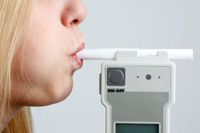Publication
Article
Internal Medicine World Report
Pulmonary Rehab Offers Long-term Survival Benefit in Elderly COPD Patients
Author(s):
New research suggests elderly patients with chronic obstructive pulmonary disease who participate in pulmonary rehabilitation programs have improved 10-year survival.

New research published April 3, 2014, in BioMed Central suggests elderly patients with chronic obstructive pulmonary disease (COPD) who participate in pulmonary rehabilitation (PR) programs have improved 10-year survival, which is consistent with previous studies that demonstrated increased short-term survival with PR.
For their retrospective study, a team of Norwegian researchers measured and compared forced expiratory volume in one second (FEV1) % predicted across elderly COPD patients receiving inpatient, outpatient, or maintenance PR interventions between 1993 and 2004.
According to the authors, 72 patients with mean FEV1 54.5% predicted participated in the inpatient program, which lasted 4 weeks and included 20 days of comprehensive PR; another 72 patients with a mean FEV1 52.2% predicted took part in the outpatient program, which included twice-weekly ambulant PR for 8 weeks; and 49 patients with mean FEV1 42.9% predicted — indicating very severe COPD — received weekly maintenance rehabilitation, which was “always started with an in- or outpatient program and then continued with a once or twice a week follow-up rehabilitation program for as long as the patient needed it or was strong enough to participate.”
While examining long-term survival data, the researchers found the 5-year survival rates were 75% in the inpatient group, 70% in the outpatient group, and 65% in the maintenance group. Additionally, the 10-year survival rates were 55% for inpatient PR, 45% for outpatient PR, and 40% for maintenance PR, while the median survival rates were 9 years in the inpatient group, 8 years in the outpatient group, and 7 years in the maintenance group. Across all 3 groups, older age, decreased pulmonary function, and use of long-term oxygen therapy (LTOT) — which has a life-longing effect in chronic respiratory failure — were significant predictors of 10-year survival.
In terms of hospitalizations, the investigators found “hospital stays and days were significantly increased in the maintenance group compared with the other groups.” Although the researchers originally hypothesized that “COPD patients receiving maintenance rehabilitation should have poorer survival because of increased morbidity and more frequent hospitalizations for exacerbation,” they ultimately found that “after correction for gender, age, and severity of obstruction, the difference (in survival) was not statistically significant” for COPD patients with very severe disease.
“Prospective randomized studies on survival effect of maintenance rehabilitation in moderate- to severely diseased COPD patients are difficult to accomplish because of the long follow-up,” the authors noted. “Therefore, future studies should focus on reduction of risk factors as an indirect measure of survival effect.”
Nevertheless, the investigators concluded their survival study “showed that very severely diseased COPD patients can be favorably treated with a long-term extensive rehabilitation program in an outpatient setting.”





